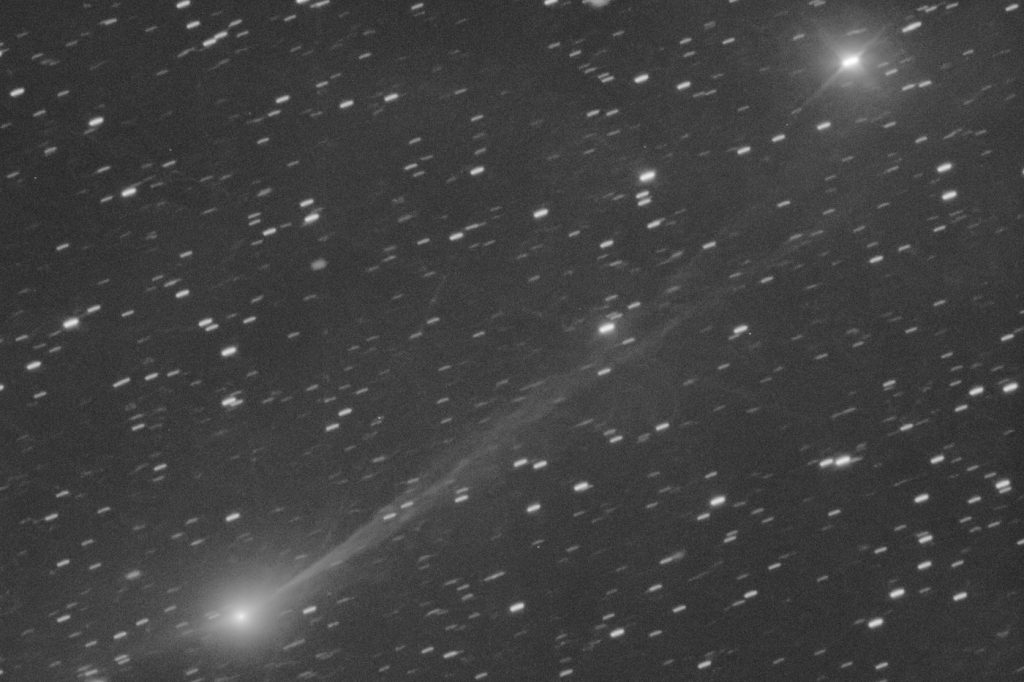CAPE CANAVERAL, Fla. (AP) — NASA has released close-up images of the interstellar comet 3I/Atlas, which is currently on a brief journey through our solar system. This comet, which was discovered over the summer, marks only the third confirmed object to have traveled from another star into our celestial neighborhood. Last month, 3I/Atlas flew past Mars at a distance of 18 million miles (29 million kilometers), prompting several spacecraft to capture detailed observations.
The images, captured by three NASA spacecraft situated on and around Mars, reveal the comet as a fuzzy white blob. Additionally, two satellites from the European Space Agency also made observations of the comet during its passage. In the coming weeks, other NASA spacecraft, including the renowned Webb Space Telescope, will continue to monitor the comet, which is currently around 190 million miles (307 million kilometers) away from Earth. Astronomers across the globe are directing their ground-based telescopes toward the comet to take advantage of this rare opportunity. Gianluca Masi from the Virtual Telescope Project in Italy focused on the comet on Wednesday, providing enhanced views.
The comet is visible in the early morning sky with the help of binoculars or a telescope. Shawn Domagal-Goldman, NASA's acting astrophysics director, noted that "everyone that is in control of a telescope wants to look at it because it’s a fascinating and rare opportunity."
3I/Atlas will make its closest approach to Earth in mid-December, coming within 167 million miles (269 million kilometers). After that, it will journey back into interstellar space, never to return. ESA's Juice spacecraft, which is en route to Jupiter, has also been observing the comet throughout the month, especially after it made its closest approach to the Sun. However, scientists will not receive the data from these observations until February, as Juice's primary antenna is currently acting as a heat shield near the Sun, which restricts data transmission.
Named after the telescope in Chile that first detected it, 3I/Atlas is estimated to be between 1,444 feet (440 meters) and 3.5 miles (5.6 kilometers) wide. This exceptionally fast-moving comet is believed to have originated from a star system that is older than our own solar system. This idea thrilled NASA scientist Tom Statler, who expressed that it "gives me goose bumps to think about." He elaborated that 3I/Atlas serves as "not just a window into another solar system," but also as "a window into the deep past," predating the formation of both Earth and our Sun.
Amidst excitement surrounding the comet, NASA officials have quickly addressed rumors suggesting that the comet could be an alien spacecraft. They clarified that due to the ongoing federal government shutdown, they have struggled to respond to the myriad of theories that have emerged recently. While NASA continues its quest for extraterrestrial life, they assure that "3I/Atlas is a comet," as stated by Amit Kshatriya, NASA's associate administrator.
This remarkable visit from 3I/Atlas offers a unique glimpse into the cosmos and signifies an important event in the study of celestial objects beyond our solar system.












